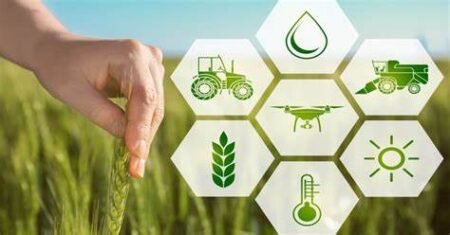This revision guide provides a thorough understanding of the key topics in SS 2 Chemistry, helping you grasp concepts ranging from the rate of reactions to the properties and compounds of various elements. With detailed explanations and sample questions, you will be well-prepared for your exams and deepen your understanding of the subject.
Week One: Rate of Reactions
What is Rate of Reaction?
The rate of reaction refers to how fast or slow a chemical reaction occurs. It can be measured by the change in concentration of reactants or products over time.
Key Concepts:
- Factors Affecting Reaction Rate: Concentration, temperature, surface area, and the presence of a catalyst.
- Reaction Rate Formula: The rate can be expressed as the change in concentration of reactants or products over time.
Likely Exam Questions:
- Define the rate of reaction.
- What factors affect the rate of a chemical reaction?
- Explain how temperature influences reaction rates.
- How does concentration affect the speed of a reaction?
- What role does surface area play in chemical reactions?
- What is a catalyst, and how does it impact reaction rates?
- Describe an experiment to measure the rate of reaction.
- How does increasing pressure affect the rate of reactions in gases?
- What is the relationship between reaction rate and the activation energy?
- Discuss why reactions speed up at higher temperatures.
Week Two: Types of Chemical Reactions
What Are the Types of Chemical Reactions?
Chemical reactions can be classified into different types based on how the reactants and products are involved.
Key Concepts:
- Combination Reaction: Two or more reactants combine to form a single product.
- Decomposition Reaction: A single compound breaks down into two or more simpler substances.
- Displacement Reaction: An element replaces another element in a compound.
- Double Displacement Reaction: Two compounds exchange ions to form two new compounds.
Likely Exam Questions:
- Define and give an example of a combination reaction.
- What happens in a decomposition reaction?
- Explain a displacement reaction with an example.
- What is a double displacement reaction, and how does it work?
- How do you balance chemical equations for different types of reactions?
- Give an example of a neutralization reaction.
- What distinguishes an exothermic reaction from an endothermic reaction?
- Describe the characteristics of a redox reaction.
- How do the types of chemical reactions relate to everyday life?
- What is the difference between a synthesis reaction and a decomposition reaction?
Week Three: Chemical Equilibrium
What is Chemical Equilibrium?
Chemical equilibrium is a state where the concentrations of reactants and products remain constant over time because the rate of the forward reaction equals the rate of the reverse reaction.
Key Concepts:
- Le Chatelier’s Principle: This principle states that if a system at equilibrium is disturbed, the system will adjust to counteract the change.
- Equilibrium Constant: The ratio of the concentration of products to reactants at equilibrium.
Likely Exam Questions:
- Define chemical equilibrium.
- What is Le Chatelier’s Principle, and how does it apply to chemical reactions?
- Explain how concentration affects equilibrium.
- How does temperature influence chemical equilibrium?
- What happens when pressure is changed in a gaseous reaction at equilibrium?
- What is the equilibrium constant, and how is it calculated?
- Give an example of a reversible reaction and its equilibrium.
- What is the difference between dynamic and static equilibrium?
- How does the nature of reactants and products affect equilibrium?
- What happens when a catalyst is added to an equilibrium reaction?
Week Four: Non-metals
What Are Non-metals?
Non-metals are elements that lack the properties of metals and are typically poor conductors of heat and electricity.
Key Concepts:
- Physical Properties: Non-metals are generally brittle, non-lustrous, and poor conductors.
- Chemical Properties: They tend to gain electrons in reactions, forming negative ions (anions).
Likely Exam Questions:
- Define non-metals and give examples.
- What are the physical properties of non-metals?
- How do non-metals react with metals?
- Explain why non-metals are poor conductors of heat and electricity.
- What are the chemical properties of non-metals?
- Compare the properties of non-metals to metals.
- How are non-metals used in everyday life?
- Explain why non-metals are essential for life processes.
- What is the role of non-metals in the formation of compounds?
- How do non-metals form bonds with other elements?
Week Five: Oxygen
What is Oxygen?
Oxygen is a non-metal gas that is essential for life on Earth. It supports respiration and combustion, and it is involved in many biological and chemical processes.
Key Concepts:
- Properties of Oxygen: Oxygen is colorless, odorless, and highly reactive.
- Uses of Oxygen: It is used in respiration, combustion, and industrial applications.
Likely Exam Questions:
- Define oxygen and describe its properties.
- How does oxygen support respiration in living organisms?
- What is the role of oxygen in combustion?
- Describe the production of oxygen in the laboratory.
- Explain the process of oxygen exchange in plants and animals.
- How is oxygen used in the medical field?
- What is the reaction between oxygen and hydrogen?
- Why is oxygen important in the process of photosynthesis?
- Explain how oxygen reacts with metals.
- What are the different methods of obtaining oxygen?
Week Six: Halogens
What Are Halogens?
Halogens are a group of elements in Group 17 of the periodic table, known for their high reactivity and tendency to form salts when combined with metals.
Key Concepts:
- Halogen Properties: They are non-metals, highly reactive, and form negative ions.
- Common Halogens: Fluorine, chlorine, bromine, iodine, and astatine.
Likely Exam Questions:
- Define halogens and list the common halogens.
- What are the physical properties of halogens?
- How do halogens react with metals to form salts?
- What is the role of chlorine in disinfecting water?
- Describe the use of iodine in medical applications.
- How do halogens form covalent bonds with other elements?
- Explain the trend in reactivity of halogens.
- What is the importance of halogens in industry?
- How do halogens react with hydrogen?
- What are the environmental concerns associated with halogen compounds?
Week Seven: Nitrogen
What is Nitrogen?
Nitrogen is a colorless, odorless, and inert gas that makes up about 78% of the Earth’s atmosphere. It plays a critical role in biological and industrial processes.
Key Concepts:
- Properties of Nitrogen: Nitrogen is non-reactive at room temperature and is essential for life.
- Uses of Nitrogen: It is used in fertilizers, food preservation, and as a coolant in cryogenics.
Likely Exam Questions:
- Define nitrogen and describe its properties.
- Why is nitrogen important for plant growth?
- How is nitrogen used in the food industry?
- What is nitrogen fixation, and why is it important for agriculture?
- How is nitrogen gas obtained industrially?
- Explain the role of nitrogen in the atmosphere.
- How does nitrogen react with oxygen at high temperatures?
- What is the reaction between nitrogen and hydrogen to form ammonia?
- How does nitrogen contribute to the nitrogen cycle?
- What are the uses of liquid nitrogen?
Week Eight: Compounds of Nitrogen
What Are Compounds of Nitrogen?
Nitrogen forms several important compounds, such as ammonia, nitric acid, and nitrogen oxides, which are crucial in both biological and industrial processes.
Key Concepts:
- Ammonia (NH₃): Used in fertilizers and cleaning products.
- Nitric Acid (HNO₃): Used in the manufacture of fertilizers and explosives.
Likely Exam Questions:
- Define ammonia and explain its uses.
- What is nitric acid, and how is it produced?
- How does ammonia react with acids?
- What are nitrogen oxides, and how are they produced?
- Explain the industrial production of ammonia.
- How does nitric acid react with metals?
- Describe the role of nitrogen compounds in fertilizers.
- What is the significance of nitrogen compounds in environmental pollution?
- How is ammonia used in refrigeration?
- Explain the environmental effects of nitrogen oxide emissions.
Week Nine: Sulphur
What is Sulphur?
Sulphur is a non-metal element that is found naturally in the Earth’s crust and plays an important role in the formation of acids and compounds like sulfuric acid.
Key Concepts:
- Properties of Sulphur: Yellow solid, non-metal, and a good conductor of electricity.
- Uses of Sulphur: Used in the manufacture of sulfuric acid, fungicides, and in vulcanizing rubber.
Likely Exam Questions:
- Define sulphur and describe its properties.
- How is sulphur used in industry?
- What is the significance of sulfuric acid?
- Describe the occurrence of sulfur in nature.
- How does sulfur react with metals?
- Explain the uses of sulfur in fertilizers.
- What is the role of sulfur in the formation of acid rain?
- How is sulfur produced industrially?
- What are the biological roles of sulfur?
- How does sulfur contribute to the Earth’s natural cycles?
Week Ten: Compounds of Sulphur
What Are Compounds of Sulphur?
Sulphur forms various compounds, including sulfuric acid, hydrogen sulfide, and sulfur dioxide, which are important in both industrial and environmental processes.
Key Concepts:
- Sulfuric Acid (H₂SO₄): A strong acid used in the production of fertilizers and in petroleum refining.
- Hydrogen Sulfide (H₂S): A toxic gas with a rotten egg smell, often produced during the decomposition of organic matter.
Likely Exam Questions:
- Define sulfuric acid and explain its industrial uses.
- What is hydrogen sulfide, and how is it produced?
- Explain the environmental effects of sulfur dioxide.
- How is sulfur dioxide used in food preservation?
- Describe the role of sulfur compounds in the formation of acid rain.
- What is the reaction between sulfur and oxygen?
- How is sulfuric acid produced in the laboratory?
- Explain the role of sulfur compounds in the petroleum industry.
- How do sulfur compounds affect human health?
- What is the role of sulfur compounds in biochemical cycles?




